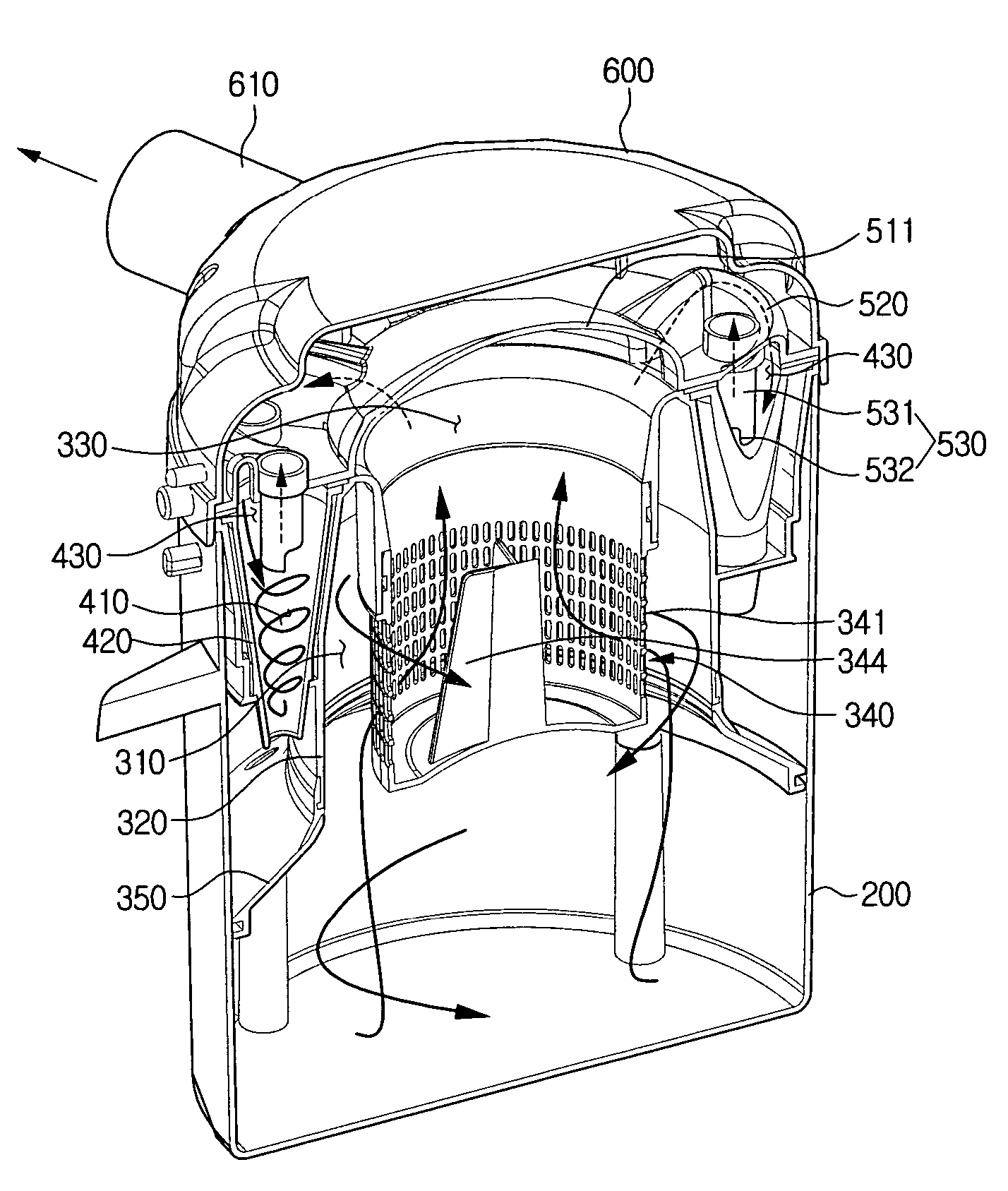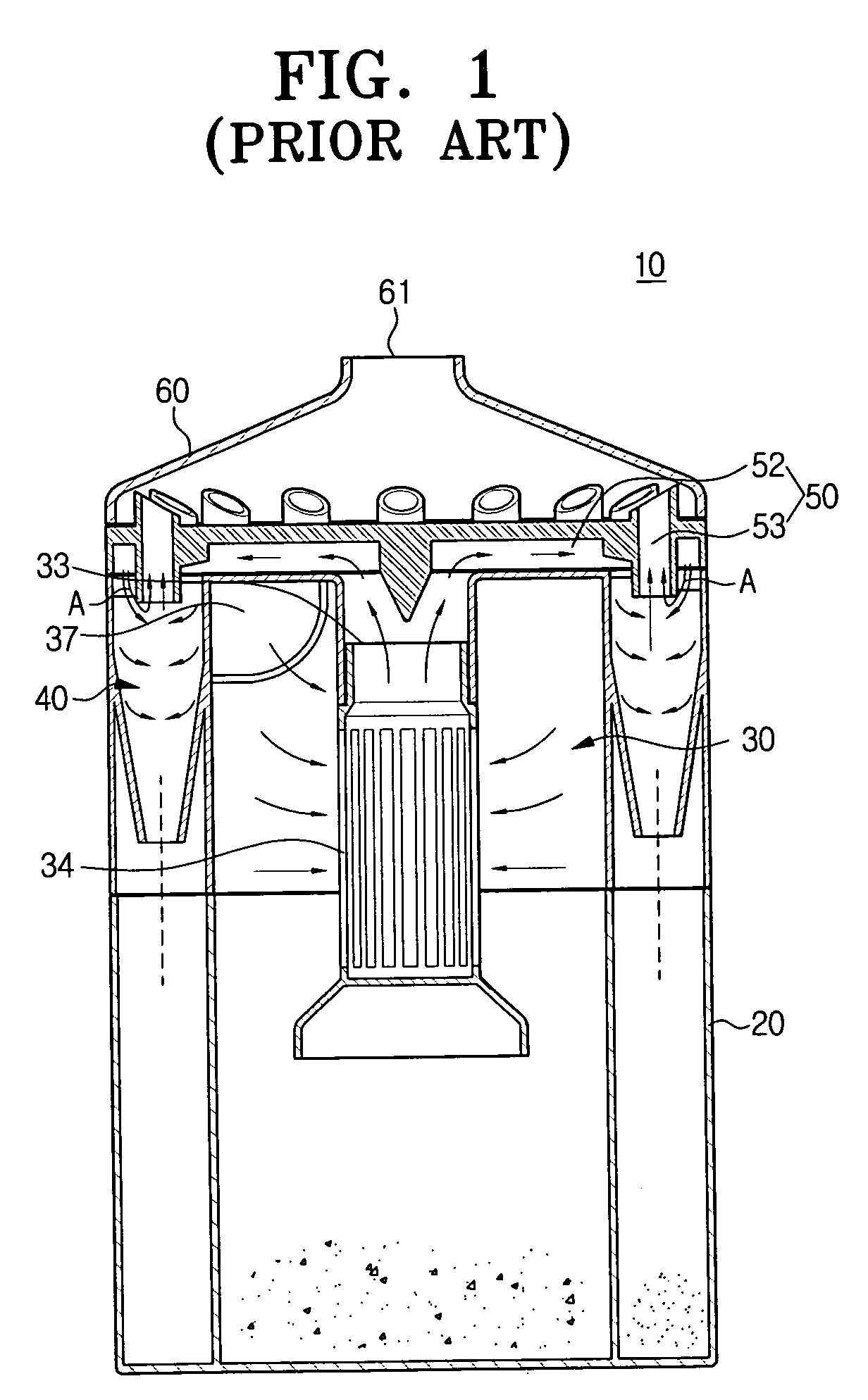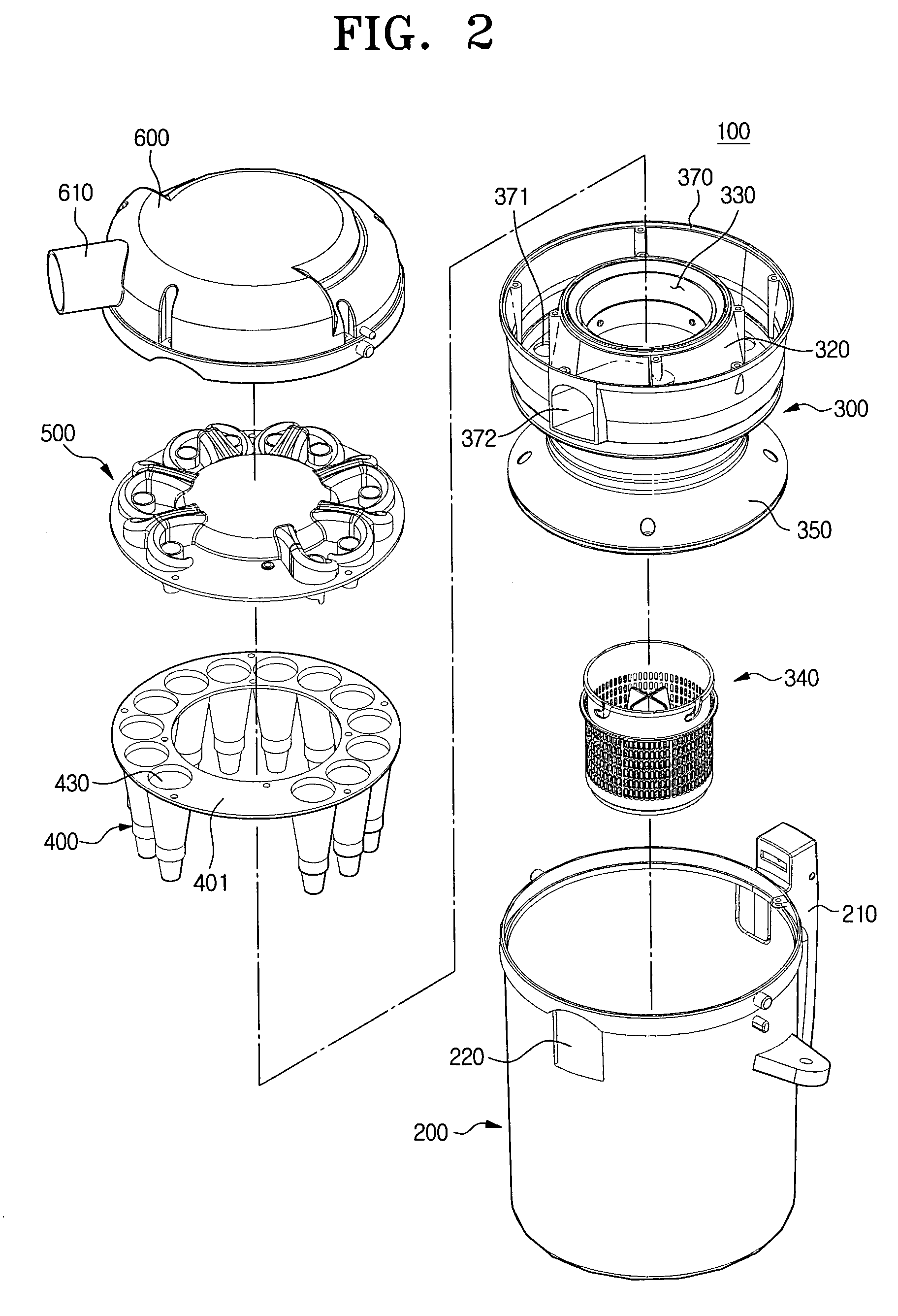Multi-cyclone dust separating apparatus
a multi-cyclone, dust-separating technology, applied in the field of vacuum cleaners, can solve the problems of reducing the efficiency of dust collection of multi-cyclone dust-separating apparatus, and frequent replacement of dust-bags, etc., to prevent pressure drop
- Summary
- Abstract
- Description
- Claims
- Application Information
AI Technical Summary
Benefits of technology
Problems solved by technology
Method used
Image
Examples
Embodiment Construction
[0033]A multi-cyclone dust separating apparatus in accordance with the present invention will now be described in detail with reference to the accompanying drawings.
[0034]As illustrated in FIG. 2, the multi-cyclone dust separating apparatus 100 includes a dust collecting housing 200, a primary cyclone 300 installed in the dust collecting housing 200, a plurality of secondary cyclones 400 installed in the dust collecting housing 200 on the outer circumference of the primary cyclone 300 at predetermined intervals, an inflow / outflow cover 500 coupled to the upper portions of the primary and secondary cyclones 300 and 400, and a cyclone cover 600 coupled to the upper portion of the inflow / outflow cover 500.
[0035]The primary cyclone 300 primarily centrifugally separates and removes relatively large impurities of the sucked air, and the secondary cyclones 400 secondarily centrifugally separate and remove minute impurities of the air supplied from the primary cyclone 300. The dust collecti...
PUM
| Property | Measurement | Unit |
|---|---|---|
| length | aaaaa | aaaaa |
| length | aaaaa | aaaaa |
| length | aaaaa | aaaaa |
Abstract
Description
Claims
Application Information
 Login to View More
Login to View More - R&D
- Intellectual Property
- Life Sciences
- Materials
- Tech Scout
- Unparalleled Data Quality
- Higher Quality Content
- 60% Fewer Hallucinations
Browse by: Latest US Patents, China's latest patents, Technical Efficacy Thesaurus, Application Domain, Technology Topic, Popular Technical Reports.
© 2025 PatSnap. All rights reserved.Legal|Privacy policy|Modern Slavery Act Transparency Statement|Sitemap|About US| Contact US: help@patsnap.com



